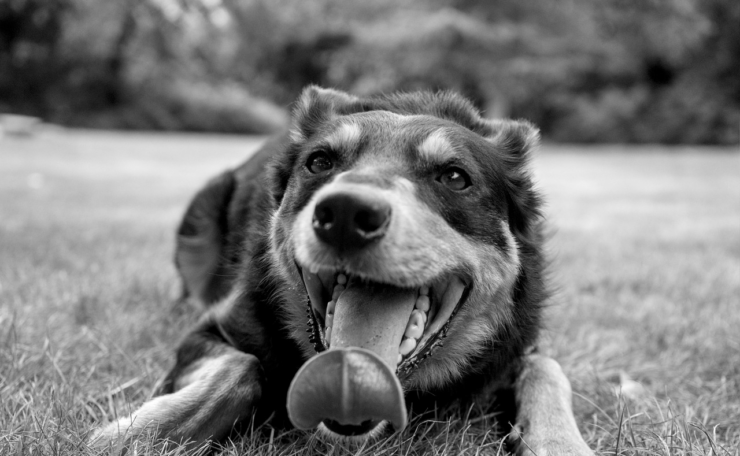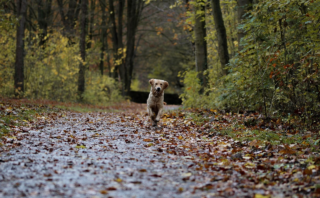Mastering the Art of Dog Training: A Comprehensive Guide
1. Introduction to Dog Training
Dog training is a critical process to enhance a canine’s natural instincts, foster their learning, and lessen behavior problems.

1.1. Definition and Importance of Dog Training
Dog training involves teaching a dog specific actions in response to commands. The importance of dog training is multifaceted; it enhances the bond between owner and pet, provides vital mental stimulation, and helps maintain the dog’s safety. Ultimately, a well-trained dog makes for a happier, more harmonious household.
1.2. Different Training Objectives
Understanding the various training objectives is key when training dogs. This includes house training, obedience training, socialization, agility and specific skills. House training involves teaching dogs where and when to eliminate. Obedience training teaches dogs commands. Socialization aids in interaction with others. Agility improves physical skills, while specific skills focus on particular tasks.
1.3. Importance of Consistent Training
Consistent training is paramount in fostering obedient behavior in dogs. This is important as it creates a clear understanding of desired behaviours, reducing confusion for the dog. Consistency helps to instill discipline, improves mental stimulation, and strengthens the bond between the pet and its owner. Ultimately, it shapes a well-behaved, happier, and more sociable dog.
2. Dog Psychology
To effectively train a dog, understanding canine psychology is crucial. Dogs have a different perception of the world and respond differently to stimuli than humans. They are pack animals – respecting hierarchy and social relations. They communicate via body language and are driven by instincts. By understanding their psychology, effective, humane training methods can be designed.
2.1. Understanding Canine Psychology
Understanding your dog’s psychology is crucial to effective training. Dogs, like humans, have emotions, and they learn through association, repetition, and rewards. Tune into their body language and vocalizations as they provide valuable insights into your dog’s emotions. Positive reinforcement techniques align with canine psychology, creating a stronger bond and promoting successful training.
2.2. Importance of Studying Dog Behavior
Understanding dog behavior is crucial for successful training. It lays the foundation for communication, fostering a deeper bond between you and your pet. It enables prophylactic actions against potential behavioral problems. Moreover, studying dog behavior allows us to better provide for our canine friends’ needs, enhancing their well-being and enriching our coexistence.
2.3. Principles of Reward and Punishment
Understanding the principles of reward and punishment is crucial in effective dog training. Rewards positively reinforce good behavior, making it more likely to recur. Punishment, on the other hand, corrects misbehavior, teaching your pet what’s unacceptable. Balancing these techniques appropriately guarantees optimal results, fostering a better relationship between you and your furry friend.
3. Training Methods
Training dogs involve several remarkable methods. Positive reinforcement, where good behavior is rewarded, helps enhance your canine’s manners. Clicker training, a precise method, helps in instilling new skills. In dominance-based training, dogs learn their place in their pack while training with treats is an effective method to motivate dogs. Each method aims for obedient, happy dogs.
3.1. Overview of Different Training Methods
Dog training methods span from reward-based Positive Reinforcement to punishment-oriented techniques like Negative Reinforcement or Positive Punishment. Clicker training is a popular subset of Positive Reinforcement. Alternatively, there’s Relationship-Based Training, focused on deepening the bond between the dog and the owner. Each method has its advantages and possible drawbacks, and they cater to various dog temperaments.
3.2. Positive Reinforcement Training
Positive Reinforcement Training is an essential method in dog training. Instead of punishing undesired behaviors, it rewards behaviors you want to encourage. This method relies on treats, praise, or play as incentives. Not only is this training method effective, but it is also a humane approach to train, promoting a positive relationship between you and your pet.
3.3. Clicker Training
Clicker Training provides a non-verbal, efficient way to train dogs. A tool called a ‘clicker’ makes a unique sound that dogs quickly associate with rewards. This innovative method uses positive reinforcement – a click rewarded with treats – to train obedience or perform tricks. Emphasized in this method are clarity and engaging repetition to promote desired canine behaviour.
3.4. Mirror Training
Mirror training capitalizes on a dog’s natural instinct to mimic. This technique involves dog owners performing the desired behavior in front of their dogs. Over time, the dog starts mimicking this behavior. It’s a non-aggressive, fun method that motivates the dog to learn. However, it requires patience as the learning process can be slow initially.
3.5. Relationship-Based Training
Relationship-based training creates a meaningful bond between the dog and its owner. In this method, the dog’s emotional reactions to its owner’s instructions dictate the pace of training. The core idea is to encourage positive behavior by providing social and tangible rewards. This strategy fosters trust and understanding, ultimately promoting better behavioural outcomes.
4. Training Techniques
Discover a range of dog training techniques to enhance your pet’s discipline and obedience. From positive reinforcement, promoting good behavior with rewards, to clicker training, a sound-based technique. There’s also crate training, perfect for house-breaking puppies, and leash training, vital for safe outdoor adventures. Each method’s effectiveness greatly depends on your dog’s breed, age, and temperament.
4.1. Crate Training
Crate training capitalizes on dogs’ natural instinct to seek a safe “den.” It aids in housebreaking, reducing destructive behavior, and fostering contentment. Ensuring the crate functions as a positive, secure space is crucial. Never use it for punishment. Gradually acclimate your puppy to the crate, starting with short, supervised periods and gradually increasing the time.
4.2. House Training
House training is an essential aspect of dog training.

4.3. Leash Training
Leash training is essential for ensuring maximum safety and control while walking your dog. It entails teaching them to walk calmly and attentively by your side, resisting distractions. Ineffective leash training may lead to aggressive behaviors like leash-pulling, which can be stressful and potentially dangerous. A successful leash training process promotes a harmonious relationship between owner and canine companion.
4.4. Socialization
Introduction
Socialization is a critical component of dog training. Essentially, it involves familiarizing your pet with various environments, people, and other animals. Early socialization can reduce behavioral issues, including aggression and anxiety. This process, initiated during the puppy stage, should continue throughout your dog’s life, contributing to a well-adjusted and happier canine companion.
5. Dealing with Behavior Problems
Dealing with behavioral issues in dogs requires patience, consistency, and positive reinforcement. Reward-based training helps correct unwanted behaviors like aggression or disobedience effectively. Often, such problems stem from various triggers – fear, frustration, or even health issues. Therefore, understanding your dog’s triggers can be pivotal in implementing successful behaviour modification techniques. Never resort to punishment; it’s detrimental to your pet’s mental well-being.
5.1. Common Behavior Problems in Dogs
Dogs may exhibit behavior problems due to underlying issues. Prominent problems include excessive barking, destructive chewing, aggression, separation anxiety, and inappropriate elimination. These problems can stem from inadequate training, lack of exercise, health issues or breed temperament. A robust understanding of these common problems is integral towards crafting effective strategies for behavioral adjustment and proper dog training.
5.2. Techniques for Resolving Aggression
Addressing canine aggression demands diligence. Techniques include behavioral modification, where undesired behaviors are corrected gradually. Positive reinforcement rewards good behavior, curbing aggressiveness. Certain medicinal aids might also be employed under vet supervision. However, professional training is vital if aggression continues despite all efforts. Remember, one must never resort to physical discipline with an aggressive dog.
5.3. Preventing and Addressing Excessive Barking
Excessive barking can be disruptive and nerve-wracking for both dog and owner. To mitigate this, it’s relevant to establish boundaries and express clear commands. Utilize positive reinforcement to encourage silence. If barking persists, it might emanate from anxiety or boredom – ensure your dog is sufficiently exercised, mentally stimulated, and provided with opportunities for social interactions.
5.4. Overcoming Separation Anxiety in Dogs
To tackle canine’s separation anxiety, consistent routines are paramount. Begin with shorter separations, gradually increasing durations. Provide distractions, like toys or treats. A sense of comfort can be achieved by leaving an item with your scent. Professional help, if needed, shouldn’t be overlooked. A dog behaviorist can provide an effective, tailored solution to your pet’s anxiety dilemma.
6. Importance of Professional Training
Professional dog training plays an essential role in nurturing proper behavior. By providing structured learning, trainers help shape a dog’s personality, ensuring it behaves appropriately in various conditions. The risk of developing aggressive tendencies drops significantly. Training enhances safety, promoting confident, sociable dogs over unpredictable, potentially dangerous ones—a vital factor particularly for pet owners with children.
6.1. When to Seek Professional Help
Seek professional help for training your dog when behavioral issues become severe or disruptive. Persistent aggression towards other animals or people, debilitating anxiety, destructive tendencies, or disobedience despite consistent efforts may require the expertise of a professional dog trainer. Early intervention may prevent these issues from becoming habitual and harder to rectify.
6.2. Choosing the Right Professional Dog Trainer
Selecting the right professional dog trainer involves scrutinizing their training philosophy, methods, and experience. Investigate their credentials and certifications, and take into account the breed and temperament of your dog. Personal recommendations are incredibly valuable. Remember, the goal is an effective, ethical trainer who cultivates a strong, healthy bond between you and your beloved pet.
6.3. Group Training Classes vs. Individual Training Sessions
Group training classes offer dogs socialization and exposure to various stimuli, nurturing cooperation skills. On the contrary, individual sessions focus on a dog’s personalized needs, providing undivided attention. While group classes are cost-effective, individual training is usually costlier but delivers tailored methods. Thus, choosing between the two depends on your dog’s unique requirements and your budget.
7. FAQs About Dog Training
Frequently, dog owners ask about the starting age for training, the best training methods, and if they can train their dogs at home. Furthermore, they inquire about the duration and frequency of training sessions. Understanding the factors influencing successful dog training can help you form a stronger bond with your canine while channeling their energy constructively.
7.1. At what age should you start training a puppy?
Puppy training should ideally commence between 8-12 weeks of age. This period is a critical learning phase for your furry friend. Establishing foundational commands, gradually introducing leash discipline, and beginning socialization during this time can contribute significantly to a puppy’s behavioral development, laying the groundwork for a well-mannered adult dog.
7.2. How much time should you spend training your dog?
Committing time to dog training is pivotal. Strive for 15-minute sessions twice a day. However, remember training isn’t confined to sessions alone – it’s about consistency throughout daily routines. Without overwhelming your dog, incorporate training into playtime and mealtimes. This creates a positive learning environment and ensures steady progress in your dog’s behaviour.
7.3 What if a dog isn't responding to training?
When a dog fails to respond to training, it can be disheartening. Techniques to address this include remaining patient and consistent, or trying different methods. Training methods are not universal; each dog is unique. Understand your dog’s personality and adapt accordingly. If challenges persist, professional training or behavioral consultations may be required.
7.4. Is it ever too late to train a dog?
No, it’s never too late to train a dog. Training can begin at any age and stage of life. Older dogs might need more patience and time, but they are perfectly capable of learning new commands and changing behaviours.
Frequently Asked Questions
1. What is the right age to start training my dog?
Dog training can start as early as 8 weeks old. This is an ideal time to begin the training as puppies are more receptive to learning new skills. However, it is never too late to train a dog. Older dogs can also be trained effectively, although it might take a bit more time and patience.
2. What types of dog training methods are there?
There are several methods of dog training, including positive reinforcement, clicker training, science-based methods, electronic training, and dominance-based training. Positive reinforcement involves rewarding the dog for their good behavior to encourage repetition. Clicker training is a form of positive reinforcement where a clicker is used to mark the desired behavior. Science-based methods involve understanding the dog’s behavior and thoughts to customize training techniques. Electronic training uses devices like shock collars to discourage bad behavior, while dominance-based training aims to establish the owner’s dominance over the dog.
3. How long does it usually take to train a dog?
The duration of dog training depends on the dog’s breed, age, temperament, and the specific skills being taught. Basic obedience training like sit, stay, and come commands can be learned within a few weeks. More complex behaviors and habits can take several months to fully establish. Consistency and regular practice are key to successful dog training.
4. Are there certain breeds that are harder to train than others?
Each breed has its unique characteristics, which can influence their trainability. Breeds like Border Collies, Labradors, and Golden Retrievers are known for their intelligence and eagerness to please, making them relatively easy to train. On the other hand, breeds like Bulldogs, Beagles, and Dachshunds can be more stubborn and independent, which might make training more challenging. However, all dogs are individuals and there can be significant variability within a breed.
5. Can I train my dog myself, or do I need to hire a professional?
While many dog owners successfully train their dogs at home, there may be situations where hiring a professional dog trainer is beneficial. If you’re a first-time dog owner, dealing with specific behavioral issues, or if your dog isn’t responding to your training methods, a professional trainer can provide guidance and techniques based on their expertise and experience.
6. Is it necessary to use treats when training my dog?
While it’s not absolutely necessary, treats can be a very effective training tool. They act as positive reinforcement, rewarding your dog for good behavior and encouraging them to repeat it. It’s important, however, to use treats wisely. Too many can lead to weight gain, and they should not be the only form of reward. Praise, toys, and play can also be effective rewards.
7. What should I do if my dog is not responding to training?
If your dog isn’t responding to training, it may be due to various factors such as stress, health issues, or a lack of understanding. Try simplifying your commands, providing consistent cues, and ensuring your training sessions are fun and free from distractions. If your dog still isn’t responding, it may be best to consult a professional dog trainer or a veterinary behaviorist for further guidance.
Conclusion
Dog training proves to be an essential aspect of maintaining a healthy, harmonious relationship between humans and their canine companions. It not only enhances the behavioral understanding between the two but also ensures the safety and well-being of the dog. Training offers a structured environment where dogs can learn to respond to commands, develop social skills, and reduce their anxiety or aggression.
Training should be a continual process, adapted to the dog’s growth and development stages, and should be tailored to individual temperament and breed characteristics. It requires patience, consistency, and understanding from the owner or trainer. The use of positive reinforcement techniques is highly recommended, as it nurtures a positive learning environment. In conclusion, dog training is not just about obedience but also about nurturing a bond of mutual respect and understanding, resulting in a happier and healthier life for both the dog and the owner.


